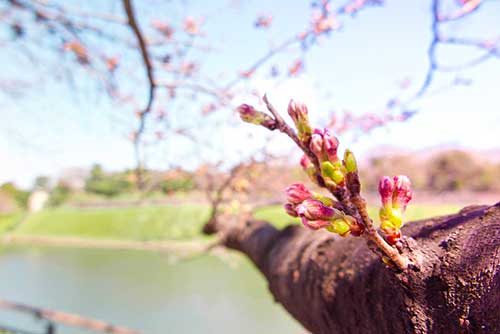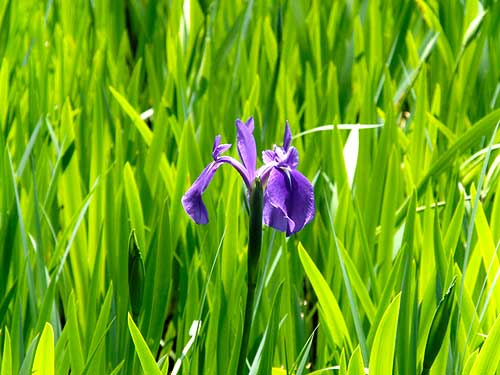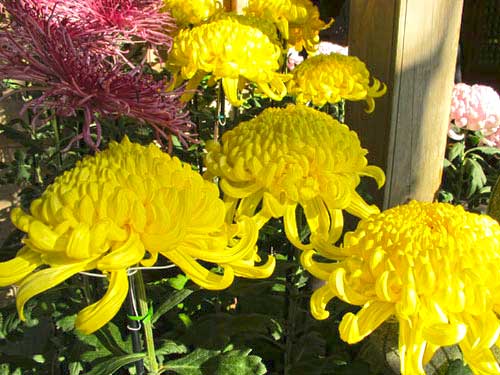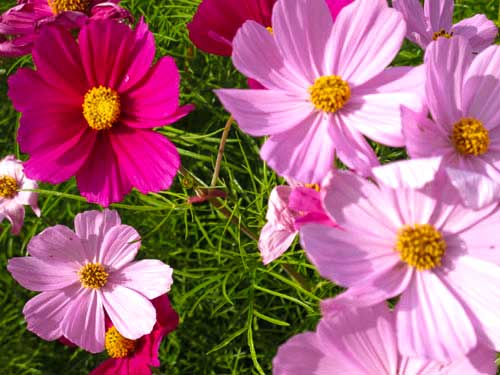Japanese Flowers Top 10 Flowering Plants
- Published on : 16/06/2016
- by : Japan Experience
- Youtube
Top 10 Japanese Flowers & Flowering Plants
Japan is home to a huge variety of flowering plants and one of the joys of visiting this verdant land is to experience its varied flora. Certain flowers and flowering plants define the seasons in Japan. Depending on what time of the year you visit, you will encounter these plants in abundance whether in parks and gardens or part of a traditional Japanese festival.
Plum blossom (ume)
Plum Blossom
Plum trees (ume) blossom in late winter in Japan and are a sign that the cold months are nearly over and spring is on the way. The plum tree was introduced to Japan from China and today there are many varieties of plum blossom in Japan and in a number of different colors. Kitano Tenmangu Shrine in north-west Kyoto is particularly famous for its plum blossom as is Kairakuen in Mito. Most towns and cities in Japan will have one area that is noted for its plums and is a place for people to gather and admire them. The plums themselves are used to make umeboshi (pickled plums) and umeshu (plum wine).
Japanese tea: a variety of camellia
Camellia
Camellia (tsubaki) is seen everywhere in Japan especially in hedgerows lining sidewalks and apartment buildings. Camellia is an evergreen, displaying glossy green leaves throughout the year and bright, red showy flowers that drop suddenly when over. The tea we all know and love (ocha in Japanese) is botanically a variety of camellia (Camellia sinensis) and can also be seen planted in neat rows throughout the Japanese countryside especially in Shizuoka Prefecture, which is famous for its tea production. Izu-Oshima Island has Japan's largest camellia garden.
Cherry blossom (sakura)
Cherry Blossom
Cherry Blossom (sakura) is the flower most associated with Japan and its culture. During the cherry blossom season, usually around the beginning of April (though later in the far north of Japan) people flocks to public parks, temples and shrines for hanami - cherry blossom viewing - an activity that often involves picnics and a fair amount of drinking and merrymaking. The brief bloom of the pink leaves before they fall to earth represents the finite nature of existence and was, and is, a recurrent theme in the literature and sensibilities of the Japanese people. The sakura motif can also be seen in many Japanese arts and crafts and goods for sale. Sakura blossoms appear on the reverse of the 100 yen coin.
Azaleas (tsutsuji)
Azaleas
The azalea (tsutsuji) flowers following the cherry blossom and, like the camellia, is often found in hedges along sidewalks and in private houses. The season when the azaleas are in bloom is one of the best times to visit Japan - before the rains of the wet season and the heat of the summer. There are over 300 varieties of azalea in Japan and they have been cultivated here since the Kamakura Period. Nezu Shrine in Tokyo is particularly famous for its stunning azaleas.
Iris (ayame)
Iris
The beautiful purple or, less frequently, white iris usually blooms for a short period in May in Japan. The Japanese iris (ayame; Iris sanguinea) grows in damp, wet conditions and can be found close to ponds and small lakes in Japanese temples and shrines. Ota Shrine near Kamigamo Shrine in Kyoto has a wonderful meadow full of purple irises, a truly wonderful sight when in full bloom. Nearby Kyoto Botanical Garden also has a remarkable Japanese iris garden.
Wisteria (fuji)
Wisteria
Wisteria (fuji) is endemic to Japan and grows in thick vines often supported on a trellis in Japan's parks and gardens. Ashikaga Flower Park in Tochigi Prefecture is especially famous for its wisteria. The kanji for fuji (藤) appears in many common family names, the wisteria flower features in many family crests, and fuji-musume, or "Wisteria Daughter," is a time-honored theme of Japanese painting and drama, specifically kabuki.
Hydrangeas (ajisai); Japanese Flowers
Hydrangeas
Hydrangeas (ajisai) bloom during Japan's rainy season, in June and July. A number of temple and shrine gardens are well-known for their hydrangeas including Meigetsu-in Temple in Kamakura, Fujimori Jinja Shrine in Fushimi in Kyoto and Tofukuji also in south-east Kyoto. The hydrangea is native to south and east Asia (China, Korea, Japan, the Himalaya region and Indonesia) as well as North and South America. There are over 70 species throughout the world, and Hydrangea serrata is the variety native to Japan and Korea, of which there are several different cultivars. Hydrangea leaves are generally toxic if eaten, but mountain hydrangea have a natural sweetening agent that is used to make what is called amacha tea.
Lotus (hasu) and water lily (suiren)
Water Lilies & Lotus
Water Lilies (suiren) and the related lotus (hasu) bloom in Japan's hot and humid summer months. The lotus flower is associated with Buddhism and Buddhist temples. Lotuses can often be seen in temple ponds. Shinobazu Lotus Pond (不忍池), on the western edge of Tokyo's Ueno Park, is a large pond full of lotuses, said to have been first planted here in the early 17th century during the Edo Period. The image above is from Hokongo-in Temple in Kyoto.
Chrysanthemum (kiku); Japanese Flowers
Chrysanthemums
The chrysanthemum (kiku) is an unofficial "national flower" of Japan taken from the Chrysanthemum Seal (kikumon) of the Imperial family. Originally from China, the chrysanthemum blooms in autumn and can be seen at flower exhibitions across the country, as growers compete to produce the perfect bloom. The Supreme Order of the Chrysanthemum is Japan's greatest honor, bestowed by the Emperor, and similar to France's Legion of Honor. The stylized chrysanthemum motif appears on the Japanese passport.
Cosmos (kosumosu); Japanese Flowers
Cosmos
Cosmos (kosumosu コスモス in Japanese) originated in the Americas and has spread throughout Japan since the early Edo Period. The cosmos appears in autumn with beautiful pink, purple and white flowers. Cosmos can be found in meadows, river banks and, increasingly, in parks and gardens, like these beautiful petals pictured at Huis Ten Bosch in Nagasaki Prefecture. Koganei Park in Tokyo has a huge number of cosmos and there are cosmos viewings at Hamarikyu Gardens, Akirudai Park, Shinagawa Hanakaido and Symbol Promenade Park in Odaiba - all in the Tokyo metropolitan area. Inside Track Japan For Kindle Readers Hotels in Kyoto
Top 10 Japanese Flowers & Flowering Plants: Japan is home to a huge variety of plants and one of the joys of visiting is to experience its varied flora.



















